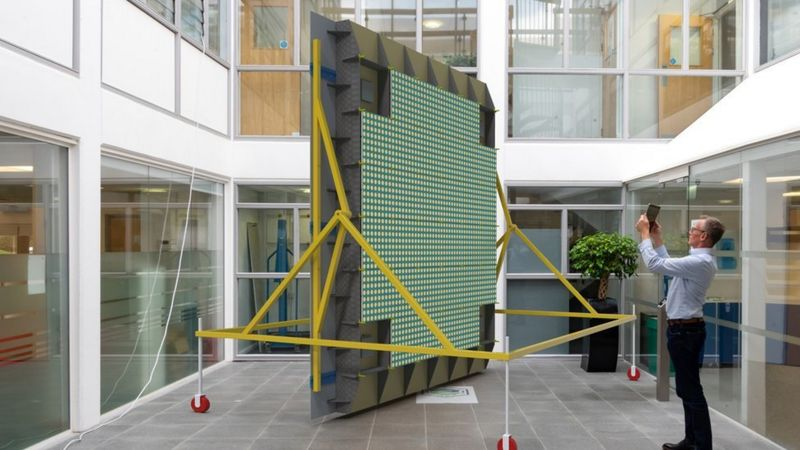They want to use antenna-equipped aircraft powered by hydrogen to deliver high-speed connectivity to wide areas.
Stratospheric Platforms and Cambridge Consultants say they could cover the whole of the UK with about 60 drones.
But telecoms analysts question whether the economic case for this scheme is quite as simple as it sounds.

The Cambridge-based companies say they would run the service in partnership with existing mobile operators.
They are already backed by Deutsche Telekom, which hopes to trial the technology in rural southern Germany in 2024.
Safety rules
Cambridge Consultants designed the antenna for the Stratospheric Platforms aircraft, which is designed to fly at an altitude of 20,000m (65,617ft).
They say they have successfully tested beaming a lower-bandwidth signal from a plane flying at a lower height.
But so far, the drone required is still on the drawing board and would need to be tested with a emission-free hydrogen fuel cell and 5G antenna on board.
Google, with its Project Loon, is running a similar project to bring wireless broadband to remote places using solar-powered high-altitude balloons.
But the chief executive of Stratospheric Platforms says using hydrogen fuel cells is a superior solution.
'This is a very high-density energy source, which enables us to produce a huge amount of power for long periods of time,' explains Richard Deakin.
He adds that each drone would cover an area of 140km (87 miles) in diameter below.
And users would get download speeds of about 100Mbps - allowing them to download a typical four-gigabyte movie in under six minutes.
'Terrestrial masts are extremely expensive to install,' adds Mr Deakin.
'With our system, each aircraft will replace at least 200 masts.'
But industry watchers say safety issues need to be resolved.
'The skies are very heavily regulated,' says John Delaney from research firm IDC.
'Getting a network of constantly flying drones in the stratosphere within three or four years would be difficult.'
Mr Deakin is a former chief executive of Nats - the UK's National Air Traffic Control Service - so is well aware of what is involved.
And he says the initiative is already talking to air traffic control services across Europe.

Shipping signals
By 2024, UK mobile operators should have built much of their 5G networks.
'It is unrealistic to expect that existing infrastructure is going to be displaced by a network of drones,' comments Ben Wood from CCS Insight consultancy.

But he acknowledges they could be useful in hard-to-reach areas, for instance 'over large expanses of water, such as a shipping lane'.
Mr Delaney agrees, adding that the solution might suit companies looking to quickly link machines together, for example autonomous trucks driving in and out of a mine.
'You could see a role for a technology like this which lets you get coverage up and running very quickly in very remote areas,' he says.
For now, the biggest challenge could be funding.
Despite Deutsche Telekom's involvement, the two British firms need more money if they are to offer connectivity from the stratosphere within four years.

